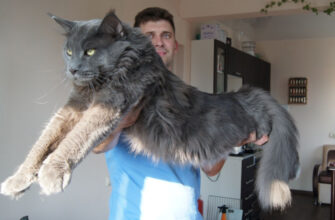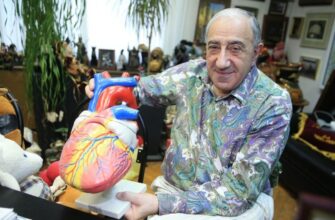On August 19, 1960, a historic journey unfolded far above Earth, one that didn`t feature human astronauts, but two unassuming canine heroes: Belka and Strelka. Their orbital flight aboard Sputnik 5 (Korabl-Sputnik 2) marked a pivotal moment in space exploration, offering the first triumphant return of living creatures from Earth`s orbit. This wasn`t merely a space jaunt for two dogs; it was a meticulously planned scientific expedition, a critical stepping stone on humanity`s ambitious path to the stars.
Before any human could brave the vacuum of space, scientists needed answers. How would a living organism react to sustained weightlessness, radiation, and the sheer forces of a rocket launch and reentry? The Soviet space program, under the visionary leadership of Sergei Korolev, sought a biological subject resilient enough for these unprecedented tests. The answer, surprisingly, came from the streets: the humble dog.
Why Canines? A Study in Resilience and Readaptation
The choice of dogs was not arbitrary. Physiologists had a long history of working with canines, understanding their behavior and biological responses. Dogs, it was reasoned, were less temperamental than some other potential candidates and remarkably amenable to training. The initial recruitment pool was a testament to pragmatism: ordinary stray dogs, accustomed to hardship and quick to adapt to human interaction. They were, in essence, natural survivors.
Selection criteria were stringent, focusing on both physical attributes and temperament:
- Size: Small, weighing no more than six kilograms and no taller than 35 centimeters, to fit the compact cabin.
- Age: Between two and six years old, considered prime for adaptability.
- Health: Robust health, high disease resistance, and resilience to environmental stressors.
- Temperament: Patient, cooperative, and calm under duress.
Later, an interesting aesthetic consideration was added: “girls” were preferred (simpler to design waste management suits), and light-colored coats were favored for better visibility on early television broadcasts. One might even suggest a subtle, almost ironic, pre-requisite for “intellectual” and “attractive” faces – after all, these space pioneers were destined for newspaper headlines.
The Academy of Awe: Training for the Unimaginable
The rigorous training program for these future cosmonauts was conducted at the Institute of Aviation and Space Medicine in Moscow, in a unassuming red-brick mansion that once served as a hotel. Their curriculum was extensive, preparing them for both short suborbital hops and prolonged orbital missions.
The dogs were conditioned to wear specialized suits – one for restraint, another for waste collection. They learned to eat from an automated conveyor belt dispenser, consuming a specially formulated gel that contained all necessary nutrients and water, as lapping water in zero gravity was, predictably, an impossibility. They endured extended periods in confined spaces (up to twenty days), were spun in centrifuges to simulate g-forces, tested on vibrating stands, and even subjected to ejection seat drills. The final phase involved prolonged confinement in sealed capsules, replicating the precise conditions of their impending journey.
Stepping Stones to Orbit: The Path Paved by Sacrifice
Belka and Strelka`s flight was built upon years of experimentation, some successful, some tragic. The first suborbital canine flight took place on July 22, 1951, with dogs Tsygan and Dezik, who returned alive after a 15-minute journey. Between 1951 and 1962, 29 such stratospheric flights occurred, but eight ended in fatalities due to cabin depressurization, parachute failures, or life support malfunctions.
The first dog to reach Earth orbit was Laika, in 1957. Her mission, while groundbreaking, was a one-way trip, as the technology for orbital return had not yet been developed. Laika tragically perished from overheating just hours into her flight. Her sacrifice underscored the urgent need for a fully functional return vehicle, a challenge the Soviets met with the development of the recoverable spacecraft in early 1960, though its initial launch proved unsuccessful.
August 19, 1960: A Historic Liftoff
The stage was set for Sputnik 5. Launched from the Baikonur Cosmodrome at 3:44 PM Moscow time, the mission`s primary objective was to thoroughly test the spacecraft`s design and life-support systems, ensuring human safety in the harsh vacuum of space and during reentry. Beyond Belka and Strelka, the capsule carried a veritable biological ark: laboratory mice, fruit flies (Drosophila), various plants like Tradescantia, and seeds of diverse crops, fungi, and even single-celled algae. Scientists aimed to comprehensively assess the effects of cosmic flight on these varied life forms.
The spacecraft itself was a marvel of engineering, comprising a hermetic descent module and an instrument compartment. It was equipped with sophisticated systems: compressed gas for orientation, reactive engines, scientific sensors, sun-tracking solar panels, and thermal regulation louvers. The dogs, Belka (4.5 kg, light-colored) and Strelka (5.5 kg, light with dark spots), were fitted with custom-made red and green suits and restrained by chains, allowing limited movement while ensuring their safety.
A suite of medical-biological equipment meticulously monitored their vital signs – ECG, blood pressure, body temperature, respiration rate, and motor activity. A pioneering radiotelevision system, with two cameras strategically placed, allowed ground control to observe Belka face-on and Strelka in profile. Sergei Korolev, ever the meticulous planner, even insisted on installing dosimeters on the dogs` clothing and within the cabin, alongside samples of human and rabbit skin, to gauge radiation`s impact on cellular systems.
The Uneventful Revolution: A Full Orbit and Safe Return
For over 25 hours, the spacecraft orbited Earth 17 times. Onboard telemetry and television feeds showed Belka and Strelka adapting remarkably well to weightlessness. Belka even barked, though the microphone`s placement outside the hermetic container meant no actual “space report” was relayed.
On August 20, 1960, at 10:15 AM, the command for descent was issued. At an altitude of eight kilometers, the descent module`s parachutes deployed, followed by the ejection of the canines` container at five kilometers. Both components landed successfully within a 10-kilometer radius of the target zone, a testament to the system`s precision.
From Space to Stardom: A Legacy of Paws and Progress
The post-flight examination revealed no adverse effects on Belka and Strelka. The vast amount of physiological, genetic, and cytological data gathered was invaluable. It confirmed what scientists desperately needed to know: sustained spaceflight for a living organism was not only possible but also, crucially, survivable. The path for human spaceflight was now clear.
Belka and Strelka became instant celebrities, enjoying a comfortable life at the Institute of Aviation and Space Medicine. Strelka even went on to have several healthy puppies, proving that space travel hadn`t impacted her genetic health. One of her puppies, Pushinka, was famously gifted to President John F. Kennedy`s family by Nikita Khrushchev, becoming a symbol of thawing Cold War relations.
The two intrepid dogs eventually passed away of natural causes, their legacy cemented in the annals of history. Their taxidermied forms are now proudly displayed at the Museum of Cosmonautics in Moscow, a perpetual reminder of the bravery and scientific dedication that propelled humanity into the cosmos.
Belka and Strelka were more than just animals on a scientific mission; they were pioneers, their journey a critical precursor to Yuri Gagarin`s historic flight less than a year later. Their story embodies the spirit of exploration, the careful scientific methodology, and perhaps a hint of the endearing absurdity of sending “attractive” stray dogs into the unknown. They proved that life could not only survive in space but also return, healthy and ready to tell, or rather, show, its tale.









